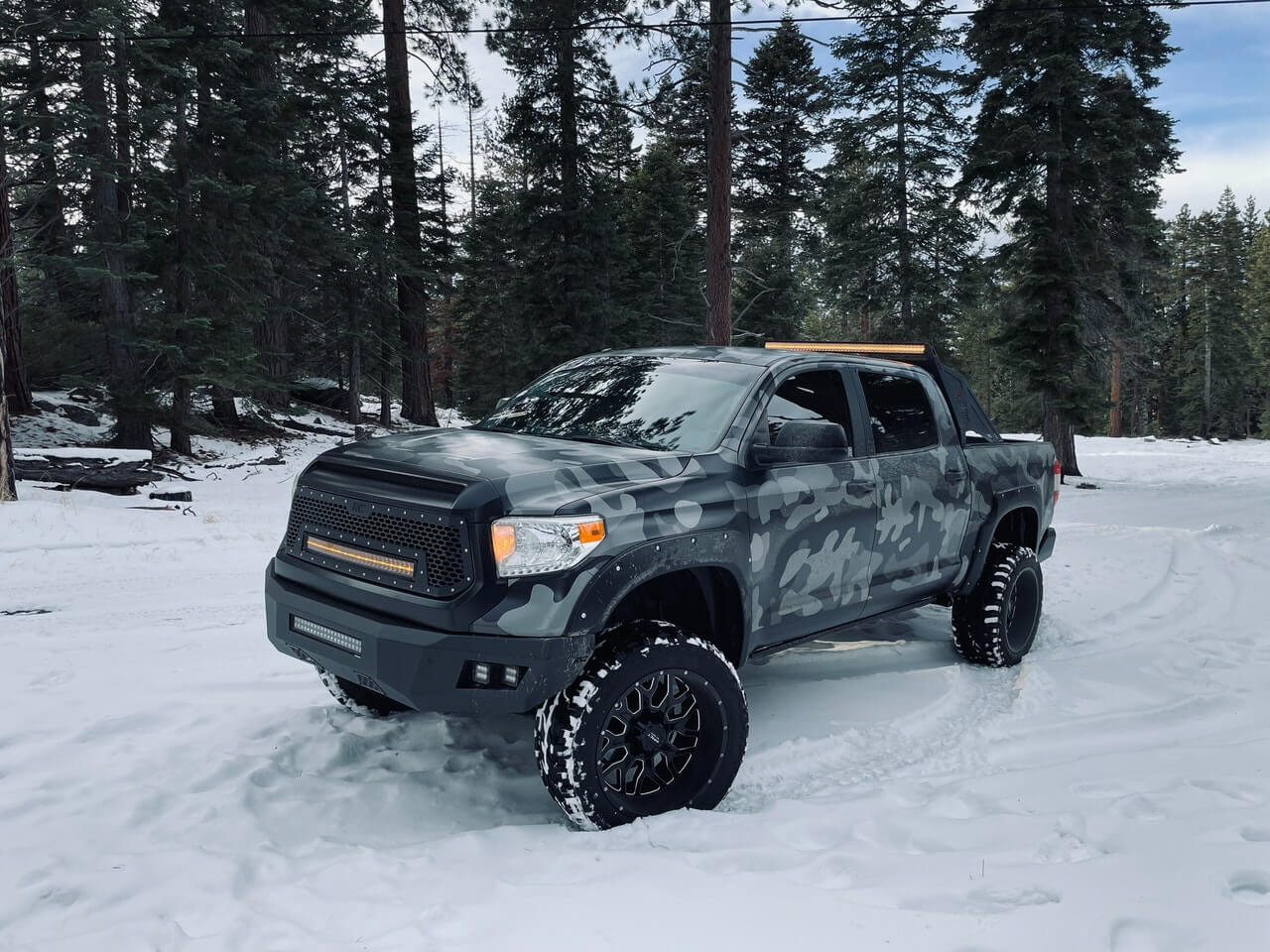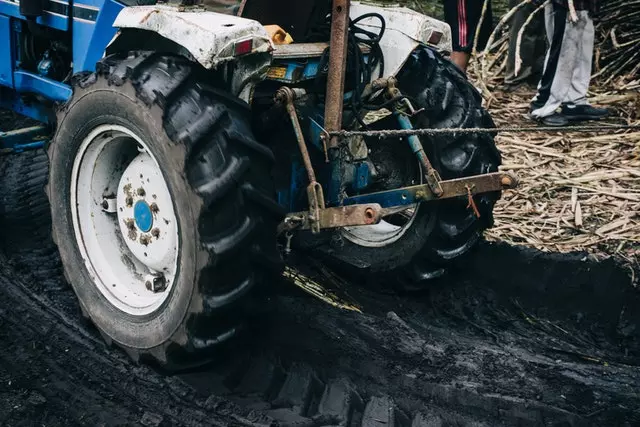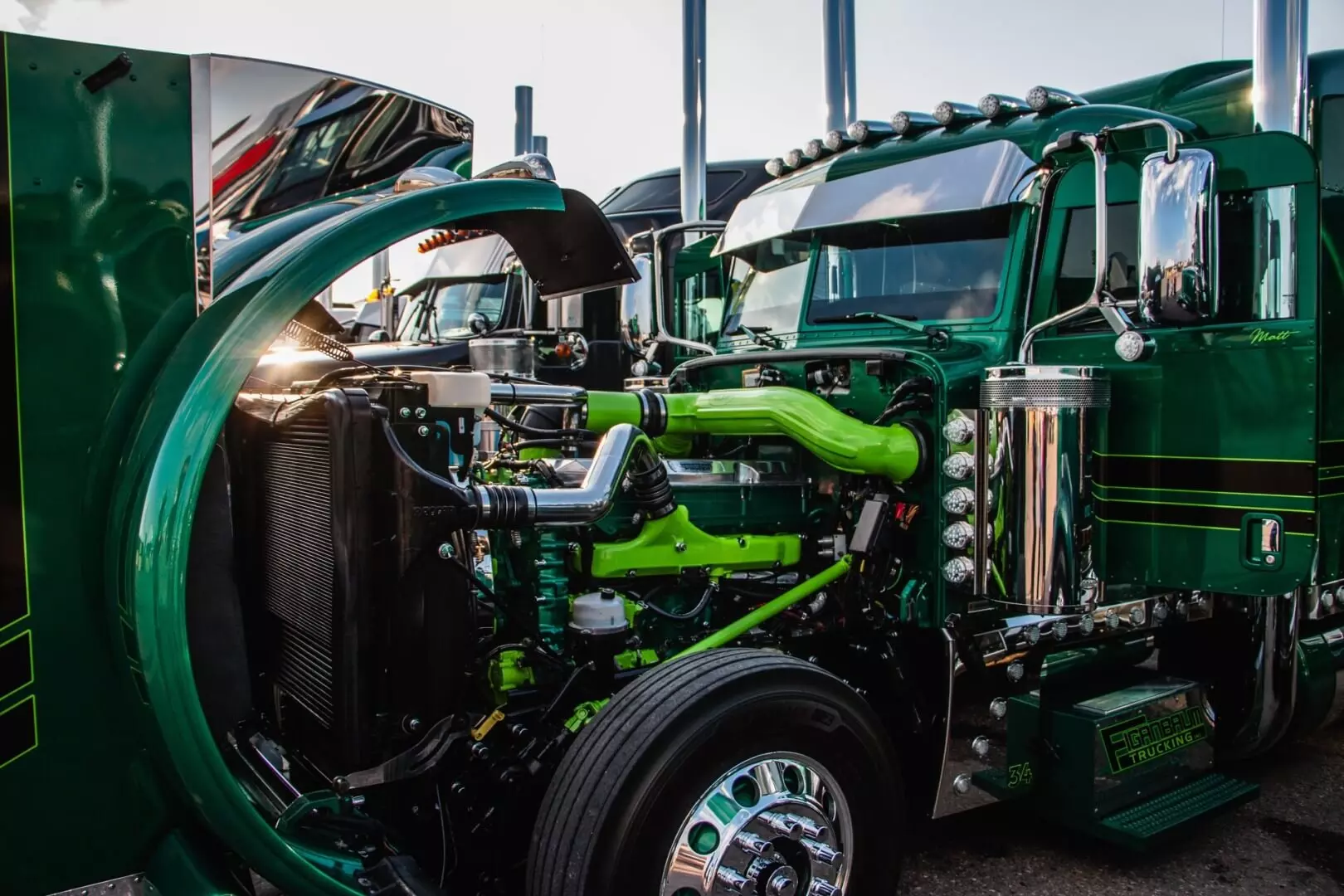Comments
- No comments found

Most of us don’t think twice about hopping behind the wheel of a truck and starting the engine — at least until the engine stops working or starts making weird noises.
The majority of modern trucks have some form of internal combustion engine under the hood. How does a truck engine work? Let’s take a closer look at truck engines to see what makes these pieces of automotive engineering tick.

To understand how a truck engine works, first, we need to understand the engineering behind the four-stroke engine system. Internal combustion engines use a four-step system to draw fuel into the engine, ignite it and turn that explosion into the power that drives the vehicles forward. Let’s break down the four steps.
First is the intake stroke. The piston moves down, making space and creating a vacuum that can draw both air and fuel into the cylinder. The precise mixture of these two components will vary depending on the engine’s tune. In older cars, the carburettor was responsible for the fuel and air intake. In newer engines, carburettors have given way to fuel injectors. The intake valve will remain open for this step.
As the piston reaches the bottom of the cylinder, also known as the bottom dead centre, the intake valve closes, and the optimal fuel-air mixture is present in the cylinder. Next, the piston moves upward, compressing the fuel-air mixture in preparation for the power stroke.
During the power stroke, the piston reaches the highest point in its travels, known as top dead centre. The fuel ignites, creating a small contained explosion that forces the piston back down to the bottom of the cylinder. The explosive power is converted to usable energy by the crankshaft and transmitted to the rest of the vehicle.
Finally, we’ve reached the exhaust stroke. The exhaust valve at the top of the cylinder will open, and the piston will travel upward again, forcing the spent fuel out of the cylinder and into the car’s exhaust system. Once it reaches top dead centre again, the exhaust valve closes, the intake valve opens, and the whole process begins again.
While the ignition mechanism may differ between petrol and diesel engines, many mechanisms are nearly identical. Most of the other systems under the hood, from the fluids you need to check regularly to a battery that starts the engine and the alternator that keeps it charged, are the same whether you’re looking at diesel or petrol engines.
Petrol vehicles currently make up most of the vehicles registered in the UK, but that number is starting to drop. In 2018, 61.9% of registered vehicles ran on petrol, with 31.5% running on diesel and the remaining vehicles falling into the hybrid or electric categories. By 2021, the percentage of registered petrol vehicles dropped to 46.3%, with electric vehicles taking up more of the market share and diesel vehicles only representing 8.2%. Petrol may be comfortable and familiar, but it’s quickly losing its crown as the top contender because consumers are trying to reduce their carbon footprints.
The most significant difference between petrol and diesel truck engines is the ignition mechanism. Petrol engines use an electrical ignition. Each cylinder is equipped with one or more spark plugs to generate a high-voltage charge. This tiny spark is all it takes to ignite the fuel-air mixture and keep the internal combustion system functioning. If the spark plugs, wires or ignition coils fail, it can cause the engine to misfire, throwing off the delicate rhythm. In 4-cylinder engines, this can cause the engine to stop operating entirely. In 6-cylinder or 8-cylinder engines, it may only cause the motor to stutter and shake when you’re trying to drive.

Diesel engines may come equipped with glow plugs to keep the fuel warm and make it easier to start the engine; they don’t require spark plugs to get things going. Instead of requiring an external ignition source, diesel engines rely on compression to ignite the fuel. Diesel engines still use a fuel-air mixture, but the compression stroke heats the fuel to the high temperatures required to cause it to ignite.
Diesel engines will also often recycle exhaust gasses back into the cylinder to aid in ignition. The exhaust gasses are already hot, so the compression stroke doesn’t have to work as hard to achieve the same results. Diesel engines are a popular choice for work trucks because the fuel has a higher energy density than petrol and can generate greater torque, making it the better option for towing and hauling heavy loads.
Electric trucks, such as the Ford F-150 Lightning and the new electric Hummer, are beginning to emerge, so we’re also going to quickly touch on how electric truck motors work.
Electric trucks have significantly fewer moving parts than their petrol or diesel counterparts, making them easier to maintain and less likely to break down under normal conditions. They utilize a battery pack to power one or more electric motors. Unlike internal combustion engines, electric trucks can have multiple motors. Two is often the standard, with one motor handling a single axel, but you can have as many as four — one for each wheel — that work perfectly and provide optimal power and torque. You do have to plug them in to keep them charged, but new technology like solar roadways have the potential to change that or even keep your EV charged while you’re driving.
Electric trucks might seem like the latest toy, but they have a variety of applications. With petrol or diesel trucks, the transmission needs to reach a certain number of rotations per minute (RPMs) to deliver speed or, more importantly, torque. In electric trucks, there’s no need for that lead-up. The torque is available as soon as you hit the accelerator, making them more efficient and effective. They also accelerate faster and more smoothly than internal combustion engines, making them feel lighter on the road even with a heavy battery pack weighing them down.
Reading one article won't make you an automotive expert, but understanding how your truck engine works can make maintenance and troubleshooting easier. If you don’t ever look under your hood or feel like you wouldn’t even know what you’re looking at if you did, consider taking a peek. You don’t need to be able to take the thing apart to understand how it works.
Emily Newton is the Editor-in-Chief of Revolutionized. She is a science and technology journalist with over three years covering industry trends and research.
Leave your comments
Post comment as a guest